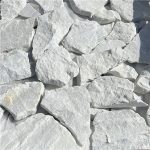Introduction
When it comes to choosing materials for the exterior of a building or a home, the options are vast and varied. mosaic tile that often come up in this discussion are stone veneer and brick. Both stone veneer and brick have been used for centuries in construction, providing durability, aesthetic appeal, and a timeless look. In this article, we will delve into the differences between stone veneer and brick, exploring their characteristics, advantages, disadvantages, and considerations to help you make an informed decision for your next project.
History and Background
Stone veneer and brick have long histories in construction and architecture. Both materials have been used in various forms for thousands of years, dating back to ancient civilizations. Stone has been a preferred building material due to its durability, natural beauty, and versatility. Brick, on the other hand, gained popularity during the Roman Empire and has since been a staple in construction around the world.
Characteristics of Stone Veneer and Brick
Stone Veneer:
- Stone veneer is a thin layer of natural stone that is used to cover walls or surfaces.
- It is typically made from real stone, such as limestone, sandstone, or slate, that is sliced into thin sections.
- Stone veneer offers a wide range of colors, textures, and patterns, mimicking the look of natural stone.
- It is lightweight compared to traditional stone, making it easier to install and more cost-effective.
- Stone veneer is versatile and can be used both indoors and outdoors, adding a rustic or modern touch to any space.
Brick:
- Brick is a man-made building material typically made from clay that is fired in a kiln.
- It comes in a variety of colors, sizes, and textures, offering endless design possibilities.
- Brick is known for its durability and longevity, with many historic buildings still showcasing their original brick facades.
- It provides excellent thermal insulation, helping to regulate indoor temperatures and reduce energy costs.
- Brick requires minimal maintenance and is resistant to fire, rot, and pests, making it a popular choice for homeowners and builders alike.
Advantages of Stone Veneer
1. Aesthetic Appeal: Stone veneer provides a natural and timeless look that adds character and charm to any building or home.
2. Lightweight: Stone veneer is lighter than traditional stone, making it easier and more cost-effective to install.
3. Versatility: Stone veneer can be used in various applications, from accent walls to fireplaces, both indoors and outdoors.
4. Durability: Stone veneer is resistant to weathering, fading, and chipping, ensuring its longevity and beauty over time.
5. Customization: Stone veneer comes in a wide range of colors, shapes, and sizes, allowing for endless design possibilities.
Advantages of Brick
1. Timeless Beauty: Brick has a classic and elegant appearance that never goes out of style, adding value to any property.
2. Durability: Brick is known for its strength and longevity, standing the test of time and requiring minimal maintenance.
3. Thermal Insulation: Brick provides excellent insulation, helping to regulate indoor temperatures and reduce energy costs.
4. Fire Resistance: Brick is non-combustible and offers superior fire protection compared to other building materials.
5. Sustainability: Brick is an environmentally friendly material, as it is made from natural clay and can be recycled or reused.
Disadvantages of Stone Veneer
1. Cost: Stone veneer can be more expensive than brick, especially when using high-quality natural stone materials.
2. Installation: Stone veneer requires skilled labor for proper installation, as it can be challenging to work with and may require additional support.
3. Maintenance: Stone veneer may require occasional cleaning and sealing to maintain its appearance and prevent damage.
4. Limited Availability: Some types of stone veneer may be harder to source or less readily available in certain regions.
5. Weight: While lighter than traditional stone, stone veneer is still heavier than brick, requiring proper support and installation techniques.
Disadvantages of Brick
1. Cost: While brick is generally affordable, certain high-end or custom options can be costly, impacting the overall project budget.
2. Limited Design Flexibility: Brick comes in standard sizes and shapes, limiting design options compared to stone veneer.
3. Installation Time: Brick installation can be time-consuming, as each brick must be laid individually, adding to labor costs.
4. Color Fading: Over time, brick colors may fade or change due to exposure to sunlight and weather conditions.
5. Maintenance: While brick requires minimal maintenance, mortar joints may need to be repaired or replaced over time to prevent water infiltration.
Considerations for Choosing Between Stone Veneer and Brick
1. Budget: Consider your budget and the overall cost of the project, including materials, labor, and installation.

2. Design Preference: Determine the style and aesthetic you want to achieve, whether it be rustic, modern, traditional, or contemporary.
3. Climate: Take into account the weather conditions in your area and choose a material that can withstand temperature fluctuations, moisture, and other environmental factors.
4. Maintenance: Consider the level of maintenance required for each material and choose one that fits your lifestyle and maintenance preferences.
5. Longevity: Think about the durability and longevity of the material, as well as its ability to maintain its appearance and structural integrity over time.
Conclusion
In conclusion, both stone veneer and brick are excellent choices for exterior cladding, offering unique characteristics, advantages, and disadvantages. Stone veneer provides a natural and rustic look with a wide range of design options, while brick offers a classic and timeless appearance with exceptional durability and insulation properties. When choosing between stone veneer and brick, consider your budget, design preferences, climate, maintenance requirements, and longevity to make an informed decision that suits your needs and enhances the beauty and value of your property. Ultimately, whether you opt for the rustic charm of stone veneer or the timeless elegance of brick, both materials are sure to make a lasting impression on any building or home.
